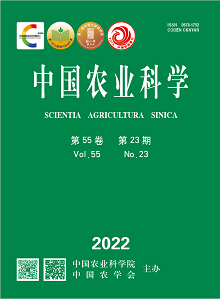【Objective】 Based on a long-term positioning test platform, the differences of annual ammonia volatilization loss of soil nitrogen in wheat-maize rotation system under different fertilization treatments were compared, aimed to provide a theoretical basis for reducing nitrogen volatilization loss and improving fertilizer use efficiency.【Method】 From 2019 to 2021, the winter wheat variety Shimai 15 and summer maize variety Zhengdan 958 were used as experimental materials in this study. With no nitrogen fertilizer applied as the control (CK), the two kinds of nitrogen fertilizer types (organic manure: M; urea: U) and two N application rates (380 kg N·hm-2: M1, U1, U2M2, and 190 kg N·hm-2: U2, M2) were set, and the distribution of N fertilizer between two crops was 47.4% for wheat and 52.6% for maize. The venting method was used to compare the differences in annual ammonia volatilization rate, cumulative loss, grain yield, and nitrogen use efficiency in a wheat-maize rotation system under different fertilization treatments.【Result】 Different fertilization treatments significantly affected soil ammonia volatilization in the two growing seasons. The soil ammonia volatilization mainly occurred 0-7 days after fertilization during the annual year in the wheat and maize crops, and the difference between the treatments gradually became smaller. The annual ammonia volatilization loss ranged from 8.6 to 79.4 kg N·hm-2. The highest ammonia volatilization loss was 79.4 kg N·hm-2 under U1 treatment, which was 18.5%, 111.7%, 162.3%, 20.5%, and 825.7% higher than that under U2, U2M2, M1, M2, and CK, respectively. The high nitrogen application rate increased soil ammonia volatilization loss, and the loss of inorganic nitrogen fertilizers was greater than that of organic fertilizers. The annual nitrogen fertilizer ammonia volatilization loss rate under U2M2, M1, and M2 treatment was 80.9%, 40.8%, and 61.3% lower than that under U1, respectively. It was indicated that the organic and inorganic fertilizers combined application or single organic fertilizers application could significantly reduce ammonia volatilization losses. The annual grain yield under U2M2 treatment was the highest, which was 24 621.8 kg·hm-2, and was 10.1%, 24.7%, 11.7%, and 32.7% higher than that under U1, U2, M1, and M2, respectively. The annual nitrogen utilization efficiency under U2M2 treatment was 52.6%, which was 11.3%, 4.1%, 13.4%, and 10.7% higher than that under U1, U2, M1, and M2, respectively. U2M2 treatment reduced the ammonia volatilization loss and simultaneously increased the grain yield and nitrogen use efficiency, which was an ideal fertilization strategy for the annual rotation of winter wheat and maize.【Conclusion】 The application of organic fertilizer could significantly reduce the annual ammonia volatilization loss of the wheat-maize rotation system, and increase the annual grain yield and nitrogen fertilizer use efficiency. Considering the source of organic fertilizer and the convenience of application, the organic and inorganic fertilizers combined application could be used as the main fertilization method to reduce the loss of ammonia volatilization and to improve the efficiency of nitrogen fertilizer use efficiency in wheat-maize rotation production system.









